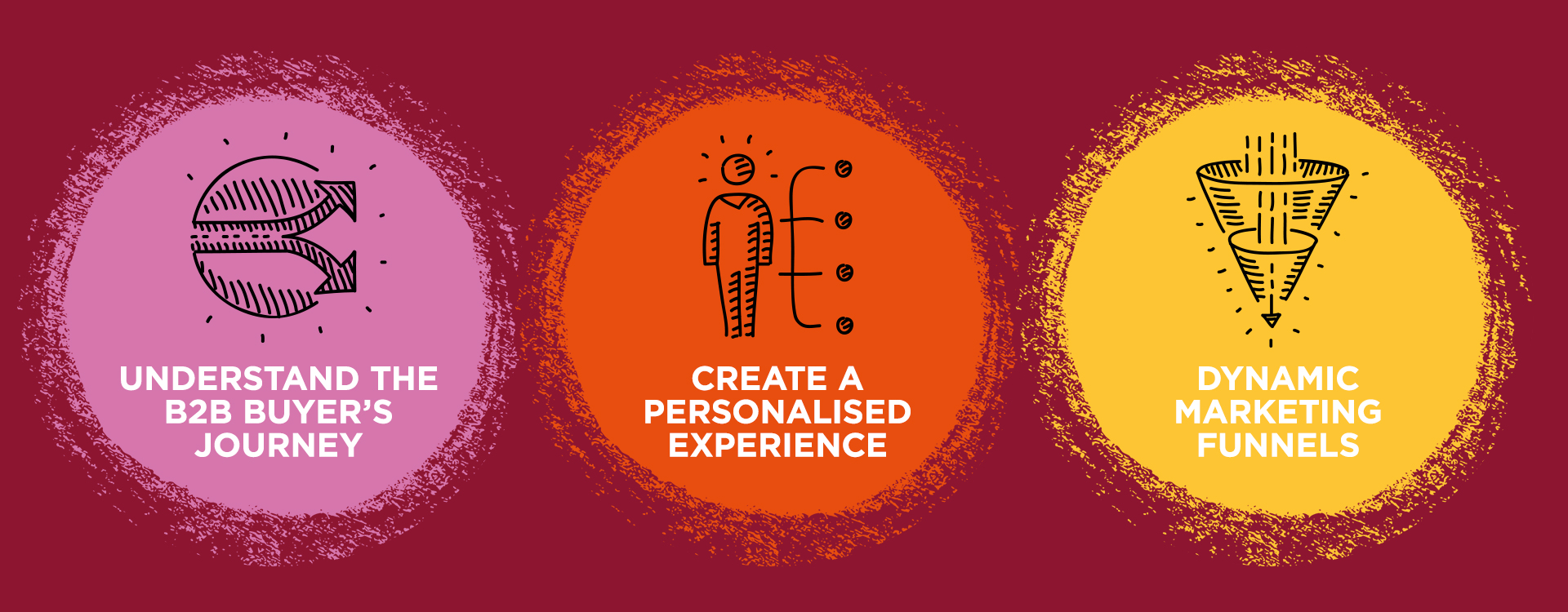Many B2B marketers in the financial services sector have been ramping up their content marketing in attempts to reach their customers in an increasingly competitive industry. Usually, this includes significant investments in things like social media marketing, blogging and article writing, and occasionally videos, infographics and other branded visual assets.
But, while these initiatives may generate some views and maybe even a bump in sales, there can be limited ROI for all the time, money and effort these companies invested in them. The reality is that content marketing strategies are continually evolving. What worked one year isn’t guaranteed to work the next.
So, if that’s the case and you are marketing a financial services company today, how should you proceed?
The answer is a change in perspective.

Unlike most other content marketing trends articles out there, we’re going to focus on the three content marketing mega movements you need to be aware of in 2020. Once you understand these major shifts in the world of marketing, it will be much easier to pick out and apply the most effective content marketing strategies for your business and your audience.

1. Successful B2B marketers understand the B2B buyer’s journey
One of the most critical elements in B2B marketing strategy is understanding the process a business goes through before making the decision to purchase a product or service. This process includes three core stages:
- Awareness. Potential buyers are researching products and services that could help them solve their problem or fulfill their needs.
- Consideration. Potential buyers compare and consider different products or services.
- Decision. The buyer decides to purchase a particular product or service. We often refer to this as ‘Conversion’.
With B2B buyers, instead of selling to just one person, you will usually be selling to an entire team of people who may have a say in the purchase decision. This means the purchase process is longer, and more research-oriented than a consumer purchase. In fact, Google reports that almost 90 percent of B2B buyers conduct online research in the purchase process, and they conduct an average of 12 searches before engaging a specific brand’s site. B2B decision-making is also heavily affected by social media content. According to Accenture, 61% of all B2B transactions start online, and 51% of customers turn to social media to do initial research.
So, you’ve got to be crystal clear about the different stages your B2B buyers go through in order to create content for where they are and for what they are looking for. You can have the best content in the world, but if it’s irrelevant or given at the wrong time, then it will fail to make the impact you want.
2. Successful online marketing today is a personalised experience
Following on the heels of the trend above is marketing personalisation. Vanilla cookie-cutter content that’s targetted to everyone will more than likely actually get no one’s attention. Instead, you need to be creating relevant, direct messaging to current and prospective buyers.
This content-based messaging can take on many forms, such as social media updates, articles, research papers, email newsletters (yes, email is making a comeback), videos, graphics and podcasts.
Today’s marketing leaders are focused on the experience of using a product or service as opposed to the features of the product and service itself – now and long into the future. And, the best way to create a positive experience is through content and useful tools that answer their questions or solve their customers’ immediate problems.
3. Dynamic marketing funnels turn curious researchers into loyal buyers
While understanding your buyers’ journey and providing quality personalised content that informs, educates, and inspires your audience is extremely important, these tactics alone won’t maximise your conversion rates.
To bring your content marketing strategies together, you need to create dynamic marketing funnels that help to guide prospective customers down the buyer’s journey
When it’s executed properly, you will be delivering consistent value that will build your credibility and eventually earn your audience’s trust, and the financial services industry is one sector where your clients’ trust is of critical importance. Once that trust is earned, it will hopefully lead to the likes of a phone call or a meeting, and ultimately the purchase of your product or service.
Bottom line: If you understand your buyers and the problems and questions they have that you can solve, and you meet them where they are with personalised answers, then your sales conversations will be high. Keep doing this and these same customers will not only recommend your services to others, they’ll be sure to stick around for a while, too.
Applying these trends to your company’s content
Content marketing trends are always evolving, and those touched on above are only a handful. Ensuring your content complements your brand’s mission, works towards meeting your business objectives, and is interesting, engaging and original is a time-consuming feat. If you’re not sure where to start, we can help.
Our framework ensures your content marketing and social media activity has a defined strategy that informs what you produce and how you should use all of the available corporate communications and marketing channels. We can take on as much responsibility for the creation and implementation as you need, all while making sure that your resources are used in the best way and that you are able to demonstrate real value from your efforts.
Find out more about our approach and how to contact us to explore your options here.






